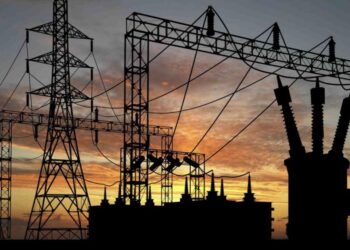The Transmission Company of Nigeria (TCN) has reported a total of 46 grid collapses in the country spanning the period from 2017 to 2022.
In a Twitter post shared on September 7, the company emphasized that over the years within this timeframe, there has been a noteworthy reduction in the occurrence of grid collapses across the nation.
Based on the data at hand, it is evident that there were a series of grid collapses over the past six years. In 2017, there were a total of 15 grid collapses, followed by 12 grid collapses in 2018.
The trend continued in 2019, with 9 grid collapses recorded. In 2020, the number decreased to 4 grid collapses, and in 2021, there were only 2 grid collapses.
However, in 2022, the figure rose again to 4 grid collapses.
The Backstory
On August 29, 2023, the Transmission Company of Nigeria (TCN) made a significant announcement. The company said that there has been zero grid system collapses in the year 2023.
According to the company, Nigeria has achieved an impressive milestone, with more than 400 consecutive days passing without any grid system collapse.
The TCN went on to underscore the importance of this achievement, emphasizing that it marks a substantial leap forward in the nation’s ongoing endeavours to fortify its power infrastructure.
This achievement is a testament to the commitment to providing a dependable and consistent electricity supply to distribution load centres and ultimately to customers all across the country.
Reasons for non-collapses since Q4/2022
In addition to its infrastructure upgrades, TCN underscored its commitment to preventing future grid collapses through innovative measures.
One of these measures is the implementation of the Free Governor Mode of Operation (FGMO), a system that autonomously adjusts power generation to counter frequency changes.
This dynamic adjustment ensures grid stability, reliability, and a reduction in transmission losses. Moreover, to address the challenges posed by occasional generation shortfalls and the subsequent decline in frequency, TCN has strategically deployed an under-frequency relay scheme.
This scheme operates at critical stages to proactively prevent disruptions caused by frequency issues. It achieves this by either triggering circuit breaker trips or alerting network operators, effectively averting the risk of system collapse.
The TCN data also noted that the last time the country recorded a grid system collapse was July 20, 2022.
Why grid collapses happen
The Nigerian Electricity Regulatory Commission (NERC) noted in its Q4/2022 Electricity report, that there were no grid system collapses in the highlighted period (fourth quarter of 2022).
The report also stated that the national grid is designed to function within certain stability limits in terms of voltage (330kV±5%) and frequency (50Hz±0.5%).
So, any deviation from these stability ranges can result in decreased power quality and, in severe cases, cause widespread power outages.
This can range from a partial collapse of a section of the grid to a full system-wide blackout.
NERC also noted that the system operator is responsible for ensuring that the frequency remains within a ±0.5% tolerance threshold.
However, when the electricity demand is higher than the supply, the grid frequency drops, which can cause some power plants to shut down automatically.






















